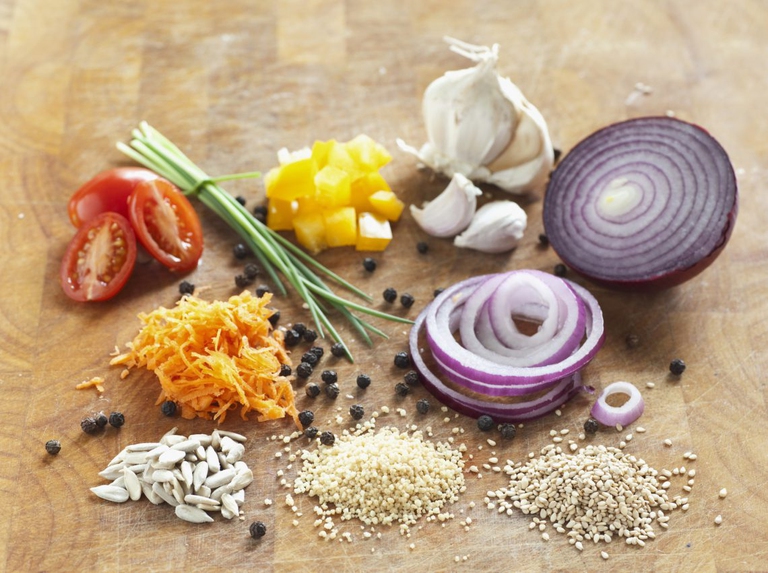
Factory farming conditions and antibiotic-resistant pathogens emerging as a result of them pose an existential threat to humans in the form of zoonotic diseases. Why it’s time to produce and consume food more thoughtfully.
Food irradiation involves exposing food to bursts of gamma rays, X-rays or electron beams to eliminate risks associated with microbial contamination, as well as to increase products’ shelf life. It has been used for many years in Asia, the United States and Europe (Netherlands, Belgium and France mostly), but it is not yet fully accepted by consumers and public opinion. A point
Food irradiation involves exposing food to bursts of gamma rays, X-rays or electron beams to eliminate risks associated with microbial contamination, as well as to increase products’ shelf life. It has been used for many years in Asia, the United States and Europe (Netherlands, Belgium and France mostly), but it is not yet fully accepted by consumers and public opinion. A point against this practice is that irradiated food can’t be labeled as organic in the US because it doesn’t meet the Department of Agriculture’s standards independently of how the food is grown or produced, leading to questions about its safety.
At the beginning of the 20th century US and British patents were issued to use radiation to kill bacteria in food. This technique gained importance during the Second World War, when it was key to food preservation for military troops in the field. Wheat, potatoes, pork, spices, poultry, red meat, fruit and vegetables were approved to be irradiated by the US Food and Drug Administration (FDA). Astronauts have also been eating irradiated foods since the beginning of the space programme and continue to consume irradiated beef, pork, smoked turkey and corned beef aboard space shuttles.
The expanded use of irradiation started in the US in 1986. In recent years about one-third of spices consumed in the country are undergoing this process, equivalent to around 175 million pounds (80 million kilos), following a contamination discovered between 2007 and 2009.
Besides the FDA, the US Center for Disease Control and World Health Organisation have recognised food irradiation as a safe process. Internationally, it must be labelled and bear the Radura symbol with a disclosure statement such as “treated with irradiation” or “treated by irradiation”.
The Center for Food Safety is a US-based non-profit organisation that works to protect human health and the environment by curbing the use of harmful food production technologies and promoting organic and other forms of sustainable agriculture. It believes that the process of irradiation may be misused to cover poor sanitation conditions and can create trace amounts of cancer. It also claims that it destroys vitamins, proteins, essential fatty acids and other nutrients. For this reason, it is against FDA proposals to grant a different form of labelling to irradiated food, whose industries have been struggling for years to use milder words on labels such as “pasteurisation”.
Many studies have pointed to the negative effects of irradiated food, observing premature death, internal bleeding, rare forms of cancer and fetal death in animals fed with it. One of the claims is also that irradiation causes the formation of dozens of chemical compounds, many of which have toxic properties. Yet no research has offered conclusive findings and isn’t enough to prevent the FDA from approving this practice.
Critics also express concern that labelling with the Radura symbol is mandatory only if a product has been irradiated directly and is a retail product, i.e. sold to consumers: there is no obligation to display the symbol, however, if it is an ingredient (of a canned soup for example) or a product sold to a restaurant.
Food irradiation is slowly gaining consumer acceptance within many parts of Europe, especially in the UK. Two directives (framework Directive 1999/2/EC and implementing Directive 1999/3/EC) were adopted by the European Union in 1999 permitting irradiation of food if labelled properly. The European Food Safety Authority (EFSA) assessed the safety of food irradiation, confirming that there are no microbiological risks for the consumer that can be linked directly to food irradiation.
European experts state that most of the substances formed after irradiation are also formed during other types of processing and in comparable levels. They also underline that only a very limited quantity is irradiated in Europe today and that the only negative evidence was observed in certain recent studies showing neurological problems in cats fed only with irradiated food in high doses. It isn’t yet clear why this happens only in cats, and how. They also claim that further resources are necessary to assess the possible relevance of these studies to human health. Italy on its part follows European directives for products like potatoes, garlic and onions, while in other European countries it is admitted also on fruit, vegetables, cereals, chicken and some fish.
Siamo anche su WhatsApp. Segui il canale ufficiale LifeGate per restare aggiornata, aggiornato sulle ultime notizie e sulle nostre attività.
![]()
Quest'opera è distribuita con Licenza Creative Commons Attribuzione - Non commerciale - Non opere derivate 4.0 Internazionale.
Factory farming conditions and antibiotic-resistant pathogens emerging as a result of them pose an existential threat to humans in the form of zoonotic diseases. Why it’s time to produce and consume food more thoughtfully.
The world of cinema recognises the link between food choices and the climate crisis by offering vegan menus for awards season events, including at the most important of them all: the Oscars.
Let’s look at the reasons behind the growth of veganism in India, as a small yet vocal section of the population turns towards this diet and lifestyle in the largest milk producing country in the world.
by Jeffrey Y. Campbell, Manager of the Forest and Farm Facility at FAO In the Ecuadorian Amazon, Kichwa farmers grow dozens of products on tiny parcels of land. Their lands hum with biodiversity, yielding nutritious foods that have sustained families for generations. Wandering among fruit and nut trees and crops, these indigenous agroforesters fill their baskets
Mint has many health benefits, but in food it’s often accompanied by artificial green colourings. Instead, Galatea has created a green mint ice cream in a completely natural way.
We’re talking about Galatea, a company that produces semi-finished products for artisanal ice creams using high quality ingredients, natural colouring, excluding thickeners and hydrogenated fats, respecting the environment and supporting the less fortunate.
The mad rush to fake food, like fake meat made with genetically-modified soy, ignores the importance of the diversity of our foods and culinary cultures. It’s a recipe to accelerate the destruction of the Planet and our health.
Like with all foods, the quality of an ice cream can be discerned by reading its label. An expert explains how to do this, and tells us how their company steers clear of chemicals, using only natural ingredients to produce an excellent and “free” ice cream.
Quality ingredients, no artificial colouring and hydrogenated fats. These are the main features of a great ice cream. But what makes an ice cream parlour “good”, i.e. sustainable?










